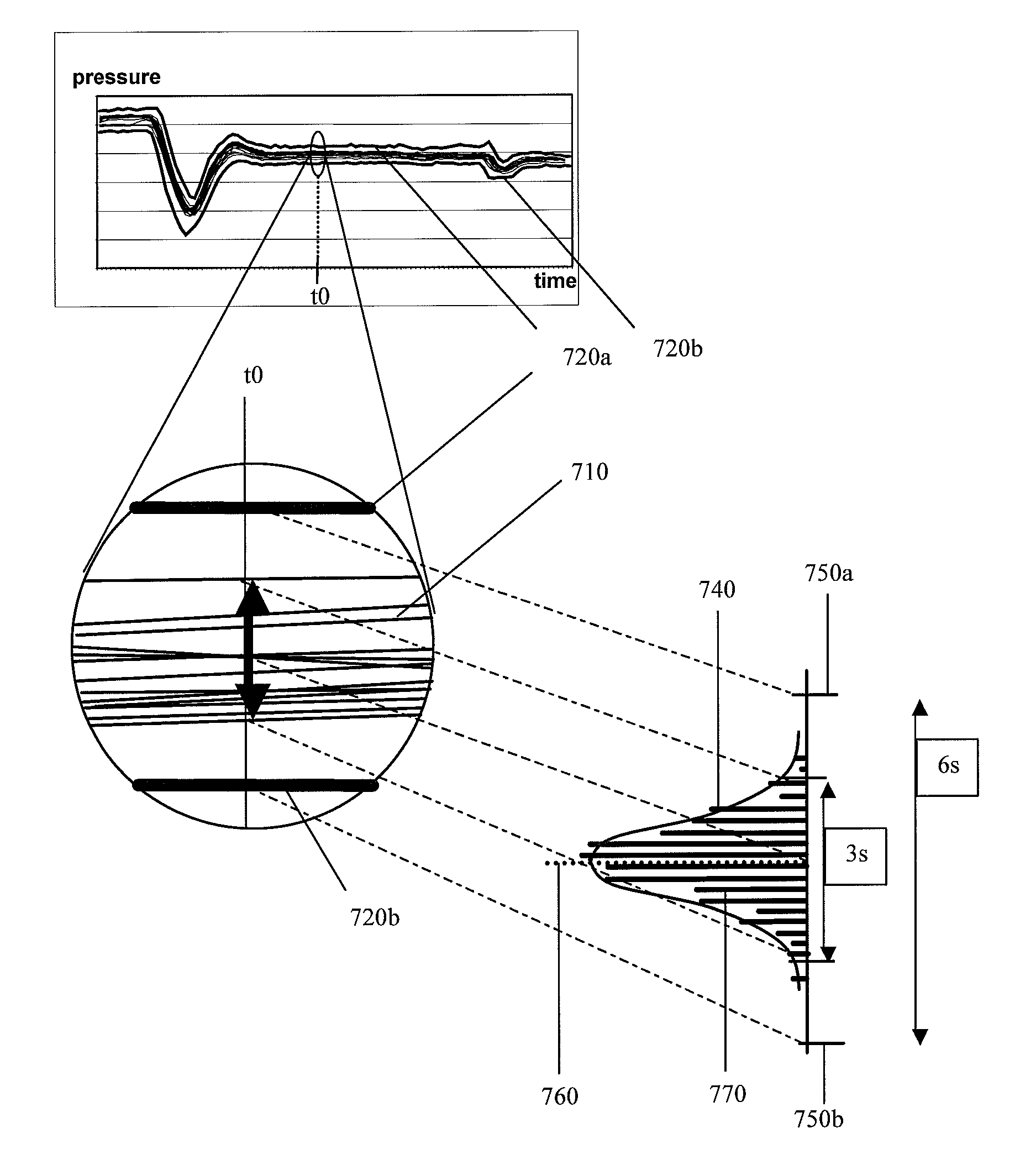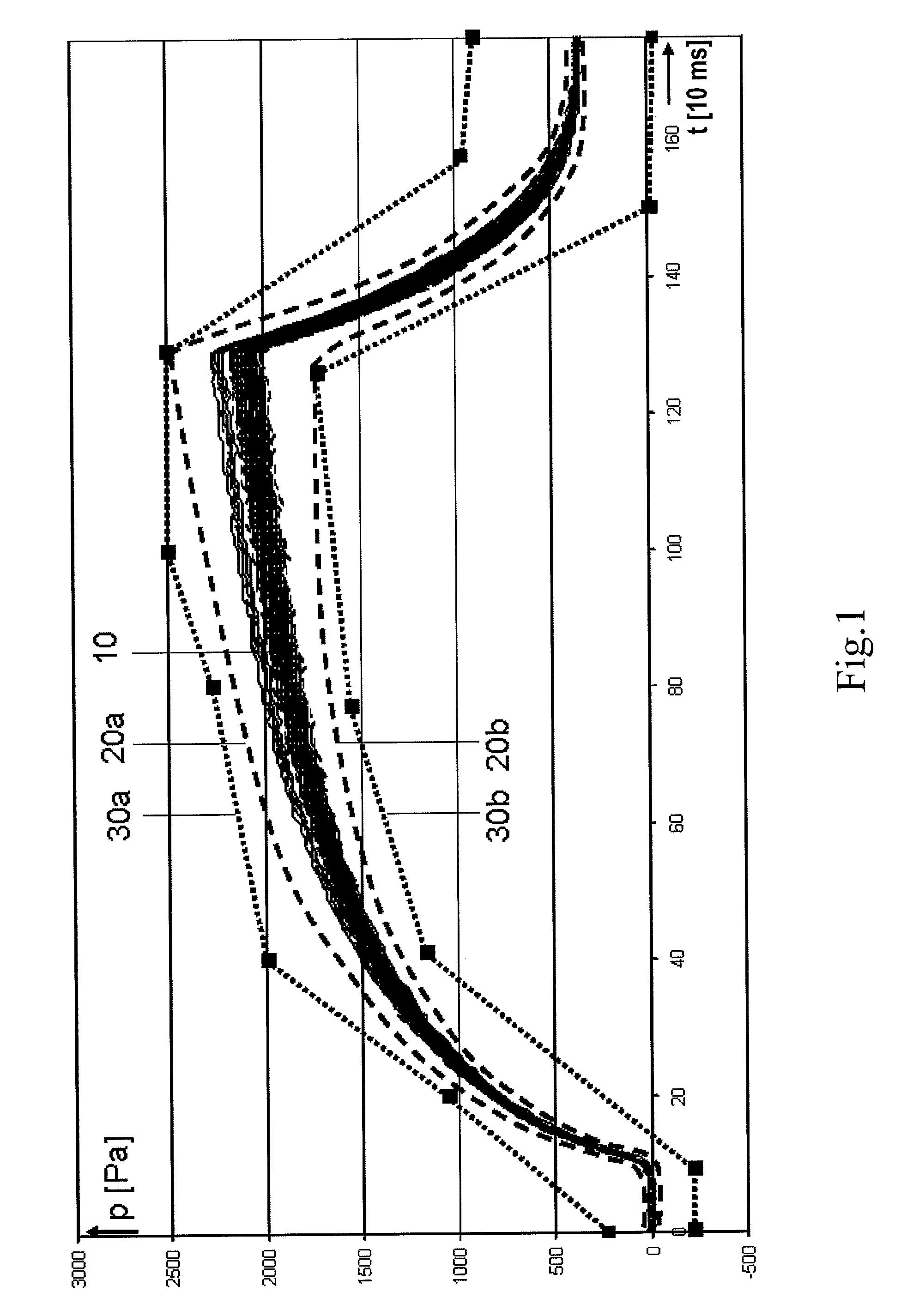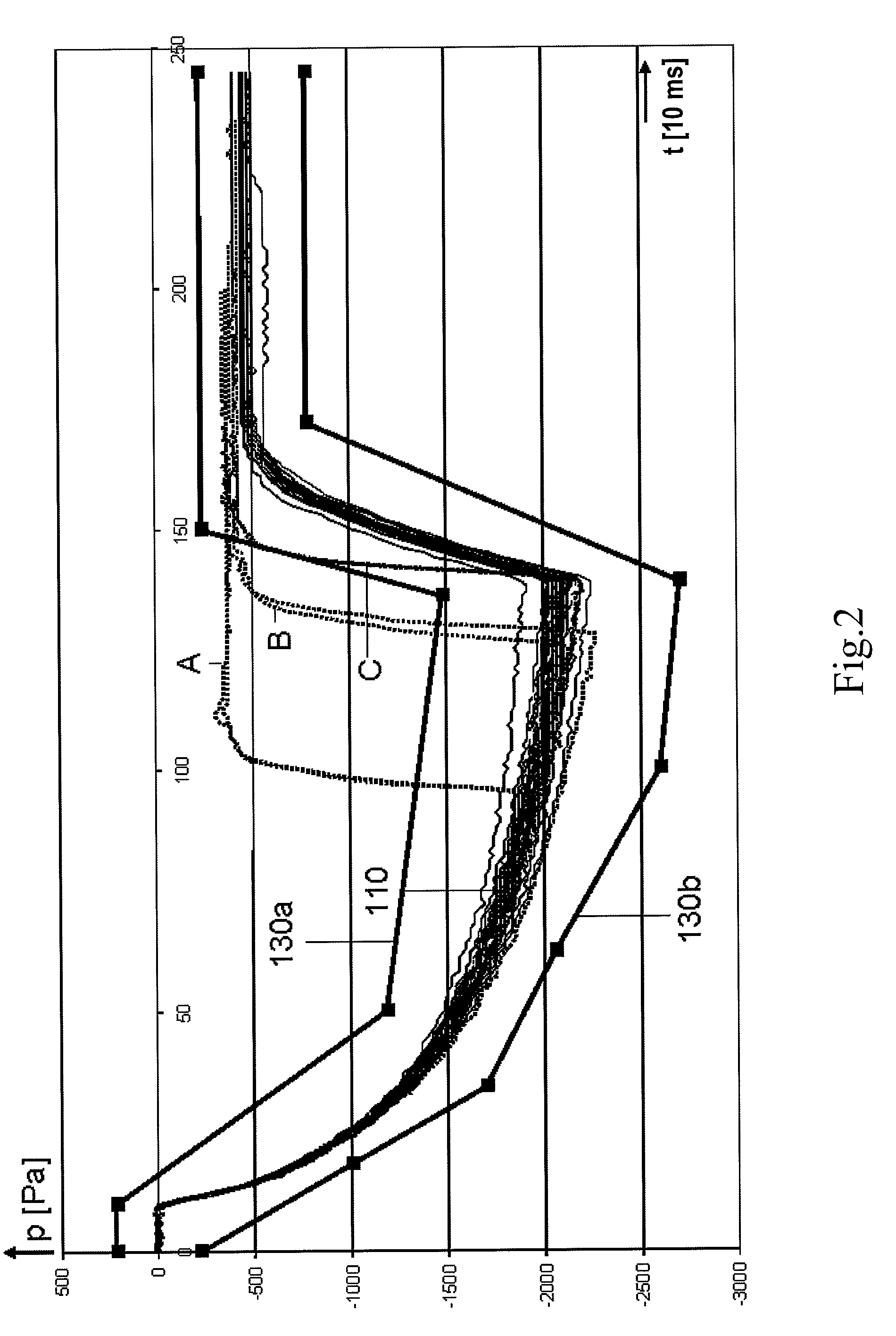Method for monitoring a fluid transfer process
a fluid transfer and fluid technology, applied in the field of fluid transfer monitoring, can solve the problems of reducing the precision of the evaluation process, not appropriately reflecting the behavior of the system, and a higher probability of false error detection
- Summary
- Abstract
- Description
- Claims
- Application Information
AI Technical Summary
Benefits of technology
Problems solved by technology
Method used
Image
Examples
Embodiment Construction
[0016]In one embodiment, the method uses interpolation points derived from a probability function, the probability function being provided by combining a plurality of test runs, i.e. by statistically combining a family of pressure curves of the same or of a similar fluid transfer process. The interpolation points are aligned with or are based on the probability function as a function of process time for a predefined, constant statistic parameter of the probability function, e.g. variance.
[0017]The present invention allows precise error detection in a fluid transfer process at a reduced storage and processing complexity by comparing the pressure with an allowable pressure profile defined by interpolation points specific to process phases of the fluid transfer process. In this way, the definition of the allowable pressure profile is adapted to the properties of the respective shape of the limit curve. In the same way, the interpolation points defining the allowable pressure profile ar...
PUM
 Login to View More
Login to View More Abstract
Description
Claims
Application Information
 Login to View More
Login to View More - R&D
- Intellectual Property
- Life Sciences
- Materials
- Tech Scout
- Unparalleled Data Quality
- Higher Quality Content
- 60% Fewer Hallucinations
Browse by: Latest US Patents, China's latest patents, Technical Efficacy Thesaurus, Application Domain, Technology Topic, Popular Technical Reports.
© 2025 PatSnap. All rights reserved.Legal|Privacy policy|Modern Slavery Act Transparency Statement|Sitemap|About US| Contact US: help@patsnap.com



